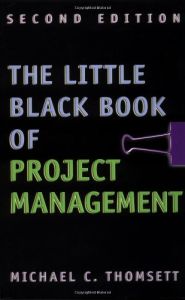When a major project falls into your lap, one thing is certain: When it's over, your reputation in your organization will be either a lot better or a lot worse, based on how the project turns out. Michael Thomsett covers all the bases you'll need to hit to manage a project successfully, one of the most daunting tasks managers face. He stuffs an impressive amount of information into 205 pages, although at times the text reads as if it is also the product of a flowchart diagram. Thomsett views project management as more science than art, insisting, for example, that project managers should not build a "fudge factor" or float into their budgets. This advice overlooks the unscientific impact that exceeding your budget can have on your career. getAbstract recommends reading this little black book before you start your next project.
Plan to Win
The biggest error most managers make, when the corporate crosshairs fall on them to manage a project, is to assume they need a new set of skills to accomplish the mission. They're filled with dread, knowing the spotlight will be on them. They lack confidence in their abilities and skills. This anxiety is rarely justified. Don't worry. You already have most of the skills you need to manage a project. In reality, managers work on projects all the time, usually within their own departments and out of sight of the organization-at-large. Projects can make or break you as a manager, so a few questions naturally arise:
- "How do I get started?"
- "Exactly what is the project meant to achieve or discover?"
- "What will the outcome look like?"
- "Who is responsible for what, and how is the effort to be coordinated?"
First, define the project. Every project has three constraints: time, resource budget and the expected result or objective. Keep these in mind as you proceed. Defining a project involves clarifying the tasks involved. Consider the intermediate steps you must take to achieve the desired result.
Building Your Team...
Michael C. Thomsett has written more than 40 books and 500 articles on business, finance, real estate and project management. He lives in Port Townsend, Washington.













Comment on this summary